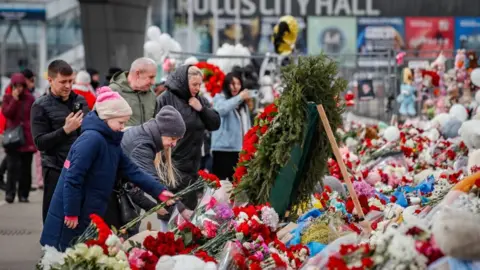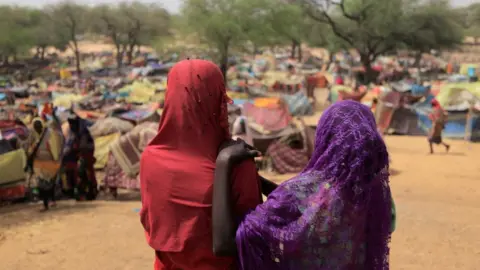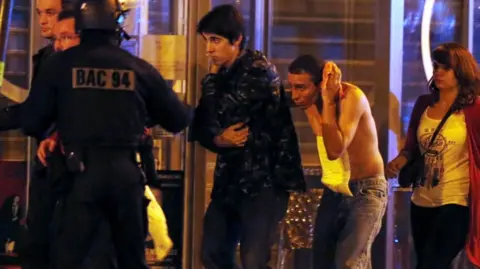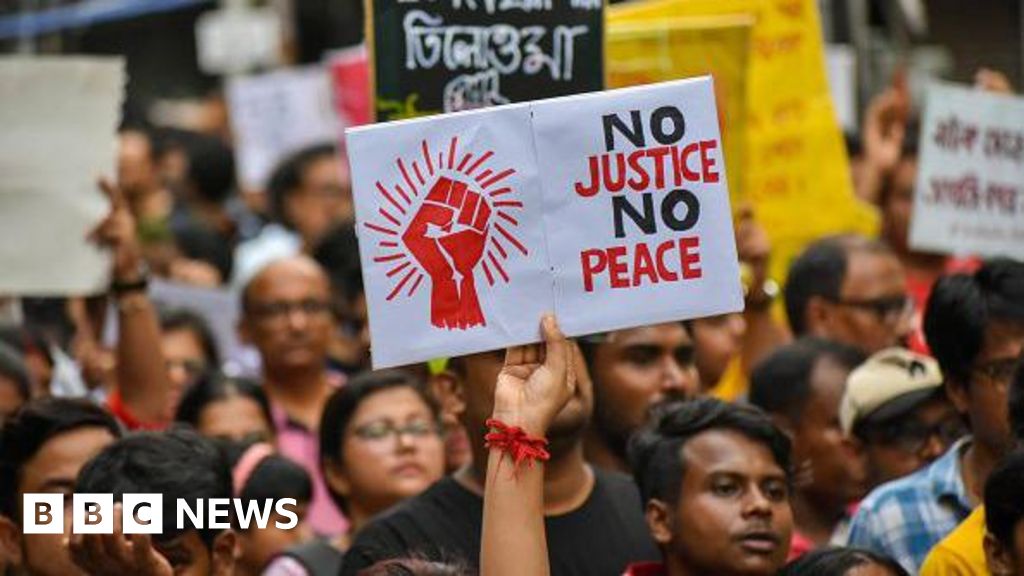ARTICLE AD BOX
18 minutes ago
By Frank Gardner, BBC security correspondent

 EPA
EPA
More than 140 people were killed in an IS attack on a concert hall in Moscow in March
It is exactly 10 years since the self-styled Islamic State (IS) group proclaimed its caliphate, announced to the world days later by its founder Abu Bakr al-Baghdadi from the Nuri Mosque in Mosul.
Also known as Isis or Daesh in Arabic, the group took over huge swathes of Syria and Iraq, imposing its severe version of Shariah (Islamic law), meting out cruel punishments and murders, then posting the videos online.
For the next five years, IS was able to attract thousands of would-be jihadists from all over the world to what it promised was a utopian Islamic caliphate. The reality was a life dominated by extreme violence: severed heads stuck on town square railings, constant harassment by patrolling "morality police" and frequent bombing raids by a US-led Coalition.
That Coalition, numbering more than 70 nations, eventually drove out IS from its last refuge at Baghuz in eastern Syria in 2019. The physical caliphate was no more, but the ideology remained.
So what has become of IS today?
Down but not out
A senior Whitehall official in London describes the status of the group as "down but not out". Its dwindling core leadership remains in Syria, but IS has expanded its franchise across several continents.
The bulk of attacks carried out in its name are now in sub-Saharan Africa. In Europe and the Middle East, its most dangerous branch is considered to be IS-Khorasan Province, widely blamed for this year’s mass casualty attacks in Moscow and Kerman in Iran.
IS-Khorasan Province, or ISKP, is based in Afghanistan and north-west Pakistan, from where it is waging an insurgency against Afghanistan’s ruling Taliban.

 Reuters
Reuters
The Taliban have been fighting an IS insurgency in Afghanistan
That may sound odd, given that the Taliban have imposed their own, extreme version of Shariah, banning women from jobs or even a proper education, as well as reintroducing punishments such as stoning to death. Yet the Taliban and IS are bitter rivals - and after 20 years as insurgents, the Taliban are now finding themselves the poachers turned gamekeepers.
When IS had a physical base - its caliphate in Syria and Iraq - it was able to attract recruits who found it easy to fly to Turkey, catch a bus to the border and then get smuggled across into Syria.
These recruits mostly lacked both military experience or any real understanding of the civil war that was tearing Syria apart. Many had a background of petty crime and drug-taking back home. These included four men from West London, nicknamed The Beatles by their captives, who ended up guarding and torturing Western aid workers and journalists.
Today one is dead and the others are in prison, including two now serving life sentences in a US supermax jail.
But IS is still inciting attacks via its online media. Its two principal causes right now are calls for revenge for Israel’s nine-month long assault on Gaza and the imprisonment of IS women and children in grim, flyblown camps in northern Syria.
Shift to Africa
Like al-Qaeda, which has also not gone away, IS thrives on disorder, despair and poor governance by whoever is in charge.
In parts of Africa, there are large pockets of all three. In recent years, the countries of the Sahel belt – notably Mali, Niger and Burkina Faso – have all experienced military coups, leading to increased instability.
French, American and EU troops that were helping local governments to keep the jihadist threat at bay, not always successfully, have largely been kicked out or replaced by Russian mercenaries.
IS now has five branches in Africa, which it refers to as Wilayaat (provinces), spread across West Africa, the Lake Chad area, Democratic Republic of Congo and northern Mozambique.

 Reuters
Reuters
IS has declared branches in countries in sub-Saharan Africa, including Chad
Here too, IS is in direct competition - and often confrontation - with al-Qaeda. IS boasts that it is expanding both its operations and the areas under its control. Certainly it appears to be more agile than the governments it is fighting, often mounting surprise deadly raids and ambushes that kill scores of troops or villagers in remote areas.
Africa has not turned out to be the geographical magnet for international jihadists that Syria was 10 years ago. There is no pipeline of volunteers flocking there in the way there was to the Turkish-Syrian border or before that, to the Tribal Territories of north-west Pakistan. But the IS franchise still has plenty of recruits, mostly young, local men, who see an almost total lack of opportunities elsewhere.
The small, localised but extremely violent conflicts in Africa may be thousands of miles away from Europe’s shores, but as the jihadist threat increases, it will inevitably propel more migrants from Africa to seek a safer life in Europe.
Europe still a target
At the height of its strength, in the mid-2010s, IS was able to mount spectacular, mass-casualty attacks in Europe, such as the attack on the Bataclan concert hall in Paris in 2015 that left 130 people dead.
Killers were trained up and dispatched from Syria, crossing multiple borders with ease and having no trouble in accessing powerful automatic weapons such as Kalashnikovs from the Balkans.
Since then, and after numerous attacks in Europe’s cities, intelligence-sharing between police forces and security agencies has improved considerably. UK officials now believe it would be much harder – although not impossible – for IS or al-Qaeda to mount the sort of highly planned and co-ordinated attack like the London bombings of 2005 or the Bataclan in 2015.

 Reuters
Reuters
The IS attack in Paris in 2015 was the deadliest in French history
Instead, they worry most about solo operators: self-motivated extremists and sociopaths who become radicalised by jihadist propaganda online.
In the UK, the vast majority of counter-terrorism work undertaken by the Security Service, MI5, is still directed towards plots inspired by IS or al-Qaeda. Europe is still in their sights - and the March 2024 attack on Moscow’s Crocus City Hall that killed more than 140 people shows that IS can seize an opportunity to strike an enemy when it is distracted, in this case by the war in Ukraine.
Leadership troubles
IS’s online media output is not as intense as it was when it had a physical caliphate, but it has still been able to recruit talented graphic designers and web designers to spread its message of hatred and incitement for revenge.
One of its more recent videos featured a highly realistic AI-generated avatar of an Arabic-speaking newsreader, delivering his message but with no risk of the speaker’s identity ever being revealed.
That risk of identity has dogged IS’s leadership ever since the death of Abu Bakr al-Baghdadi, in 2019. Without a constant, charismatic online presence – such as that enjoyed previously by the late al-Qaeda leader Osama Bin Laden – the leadership risks looking irrelevant, remote and disconnected from its followers.
However, balanced against this is the short lifespan of jihadist leaders. Once they go public, they risk their whereabouts being discovered, either by electronic surveillance and intercepts or by human informants within their own ranks.
Almost nothing is known about the current leader of IS.

 6 months ago
41
6 months ago
41








 English (US) ·
English (US) ·